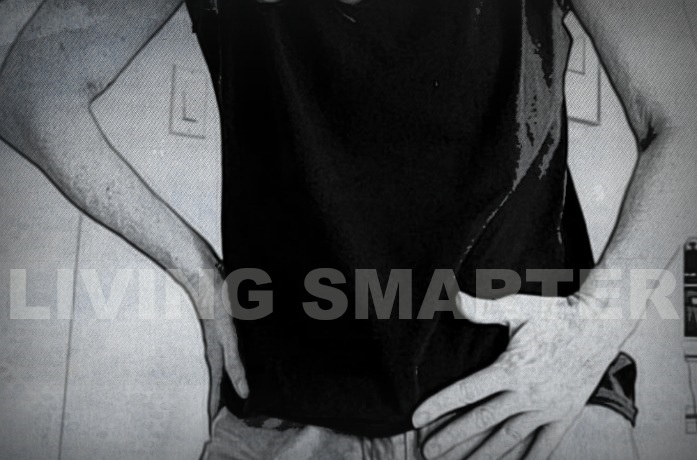Interstitial Cystitis and Fibromyalgia –
What to Do About it

Some people with fibromyalgia also suffer from interstitial cystitis which can further hinder their quality of life.
Your bladder is an all important muscular organ designed to collect urine until you can relieve yourself.
It expands as urine is deposited, sending signals of fullness through the pelvic nerves up to the brain.
Because of the strong connection between fibromyalgia and the nervous system, it’s not surprising that the bladder is impacted for many with fibromyalgia.
After all, those nerves regulating your “I need to pee” sensation are a part of the nervous system.
If you tend to use the bathroom more often than other people, or you suffer from pain or discomfort in the pelvis, vagina, scrotum or anus, there’s a chance that you suffer from interstitial cystitis.
Even pain during sexual intercourse can be a symptom of this condition. If you have found no other explanation for your symptoms, it’s worth learning more about this disorder of the bladder.
As a side note, I was one of those who suffered with endometriosis throughout my 20's and 30's, and I will say that some of the symptoms of this condition and endometriosis are similar. Just be aware so that you know what you are dealing with.
What Is Interstitial Cystitis?
This condition is also known as painful bladder syndrome.
This condition often mimics the symptoms of a urinary tract infection, but your doctor will find no infection when testing your urine.
Those pelvic nerves seem to be on overdrive as they send the signal that you need to urinate when there is little urine in the bladder. Many will also experience pain or pressure in the bladder and pelvic region, which can range from mild annoyance to severe pain.
These symptoms are constant for some and may come and go for others.
The discomfort may register throughout the day, when you’re having sex or when you’re releasing your bladder to urinate. Different people will have different symptoms, but it all comes back to pain and discomfort that isn’t connected to an infection or other known causes.
Does Fibromyalgia Cause Interstitial Cystitis?
Interstitial cystitis is diagnosed when symptoms continue for more than six weeks without any sign of infection or other causes.
While it’s common for people diagnosed with this condition to also have fibromyalgia, chronic fatigue syndrome and other conditions related to pain, you can have interstitial cystitis without fibromyalgia.
Interstitial cystitis and fibromyalgia are considered to be overlapping conditions but having fibromyalgia will not cause interstitial cystitis for everyone.
It’s possible that the pelvic nerves are at least partially to blame, since there is significant research connecting the central and peripheral nervous systems with fibromyalgia pain.
Treating It in Fibromyalgia Patients
Patients are often left to treat each of their symptoms and overlapping conditions individually. Painful bladder syndrome is often difficult to treat whether you have fibromyalgia or not, and it’s common for patients to try multiple treatment options before discovering what works for their body.
Typically, treatments are implemented in phases. The first phase involves lifestyle changes including the following:
- Manipulative physical therapy for the pelvic floor area
- Dietary restriction – alcohol, caffeine, citrus fruits, chocolate and tomatoes are just some of the foods that may increase bladder and pelvic discomfort
- Stress reduction
- Try pumpkin seed oil. Good for both men and women.
The dietary restrictions that relieve symptoms for one person are likely different for those that bring relief for another. It’s common for sufferers to start with an elimination diet, slowly adding foods back into the diet to see if they trigger symptoms. This can take some time, and relief is often comes after weeks or months of practicing these lifestyle changes.
If lifestyle adjustments don’t work or the pain and discomfort is severe enough to interfere with quality of life, talk with you doctor about other short term options.
If those treatment options relieve symptoms, you’re considered in remission. Continuing with the treatment plan should keep your symptoms at least to a tolerable level so that the condition doesn’t interfere with your quality of life.
When those treatments don’t work and bladder pain or discomfort negatively impacts your quality of life, you will likely see a urologist or another specialist capable of delivering some of the following treatment options:
- Cauterization for a bladder ulcer
- Botox injections
- Cyclosporine – immunosuppressant that comes with severe side effects
- Surgery
The Benefits of Natural Treatments for Painful Bladder Syndrome
Most fibromyalgia patients can control their painful bladder syndrome symptoms through lifestyle adjustments. It may take some time to go completely into remission, but this is the best option in terms of comfort and limiting side effects.
You often hear me say that although not a cure, modifications to your diet, proper movement, and reducing stress can help to lessen other symptoms of fibromyalgia.
Learning to control the stress can help lessen the severity of symptoms, including those originating from the pelvic area or bladder. I like to say it is NOT mind over matter, it IS the body and mind working together. Read more here about the Mind Body Connection.
Lisa. CT. PT.
Related Articles :
Before you leave, my sitemap can provide you with a "God's-eye" view of this website laid out in "outline format".
Stay connected by joining our unique Email here at Fibro Repair Email
Home > Fibromyalgia Symptoms > Interstitial Cystitis and Fibromyalgia
Didn't find what you were looking for? Search for it:
living-smarter-with-fibromyalgia.com
©2013-2024 All Rights Reserved
FibroFitPeople, LLC ;©2024 All Rights Reserved









